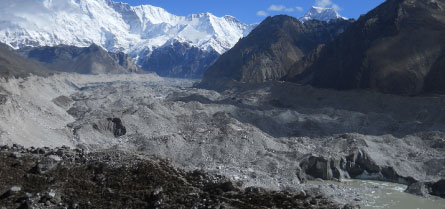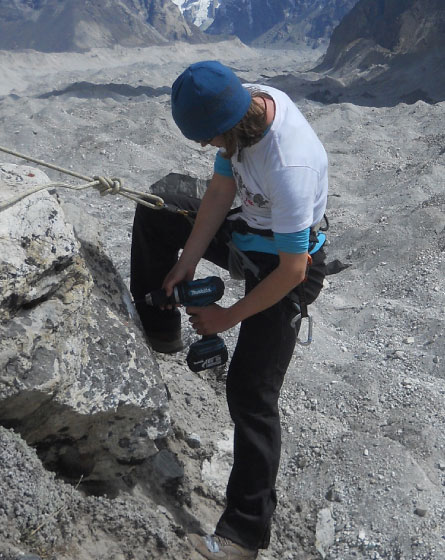Science at 15,000 feet
- More than 2 years ago
It’s only natural that for her Ph.D. research, Ulyana Horodyskyj found herself rappelling down a Himalayan cliff. After all, she got bitten by the mountaineering bug at age 6, when she witnessed her first avalanche in the Swiss Alps.


Trained first in astrophysics, Horodyskyj is now a graduate student at the University of Colorado Boulder, a school where rock climbing and glaciology go hand in hand. For a month last summer she crawled over and up the ice and rock of the mighty Ngozumpa glacier in Nepal, almost within spitting distance of Mount Everest.
Her goal: to capture the mercurial behavior of the lakes that appear and disappear atop the glacier. Villages downstream are at risk of flooding from these lakes when water levels rise quickly from melting ice. Water can just as rapidly vanish if cracks in the ice open and allow water to drain to where the glacier meets underlying rock.
Rappelling down cliffs alongside Ngozumpa, Horodyskyj drilled holes into the vertical rock and installed three cameras to snap hourly pictures of several lakes. The work paid off in one lake, where her instruments documented the vanishing of more than 100,000 cubic meters of water in two days — 42 Olympic-sized swimming pools’ worth, or more than double the normal melt runoff. “We got lucky — we captured the drainage as it happened,” she says. It was the first such documentation in the Himalayas.
Glaciologists have assumed that sudden drainages must be happening in these glacier-top (or “supraglacial”) lakes. But without on-the-ground evidence, Horodyskyj says, those assumptions would have remained assumptions. “Things are changing in ways you just cannot tell from satellite imagery,” she says.
Hard physical labor at altitudes of 4,500 to 4,800 meters isn’t the career for everyone, Horodyskyj admits. “You don’t want to mess with mountains.” But when she took local villagers on a tour of the lake that had suddenly drained, she was reminded how understanding the physics of a glacier’s change affected people’s everyday lives. — Alexandra Witze